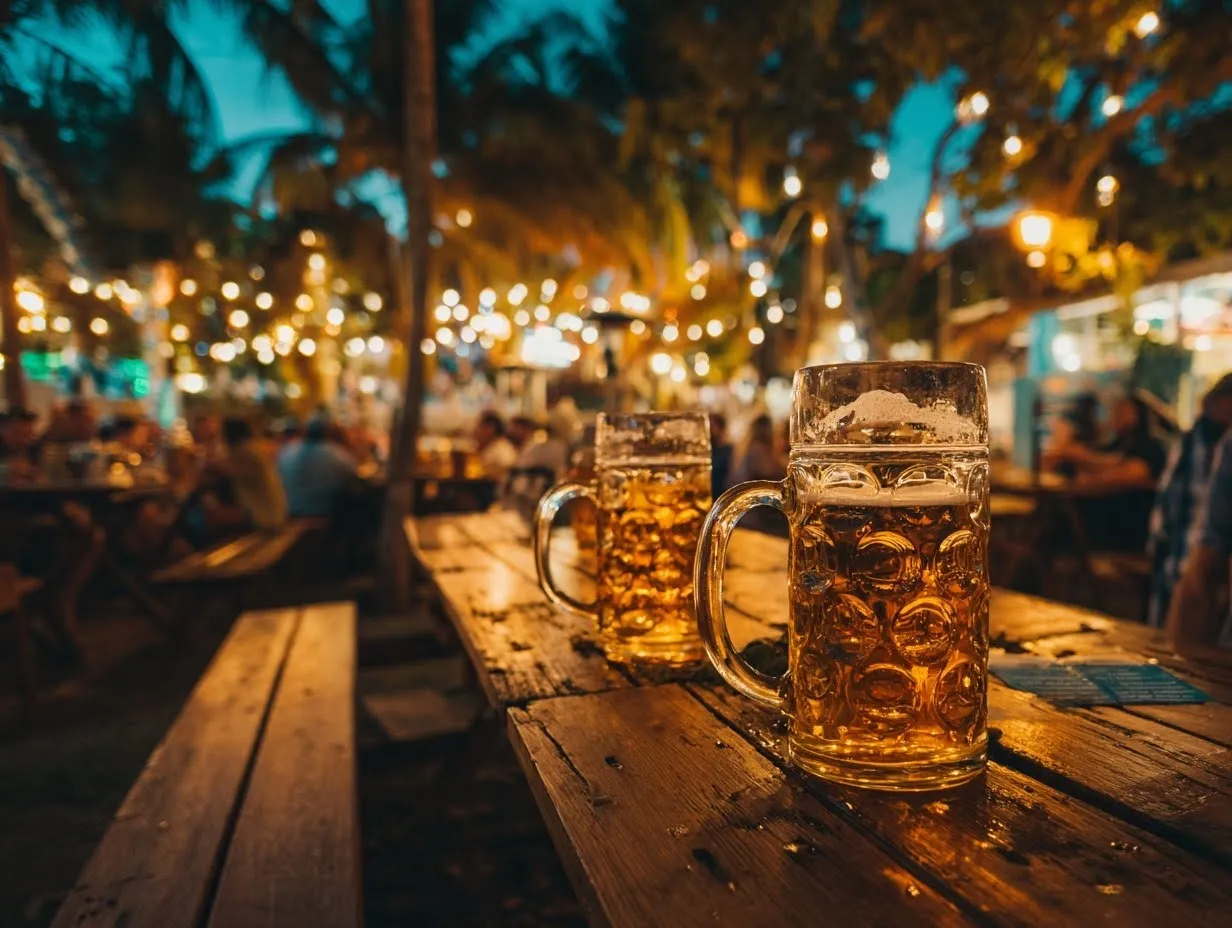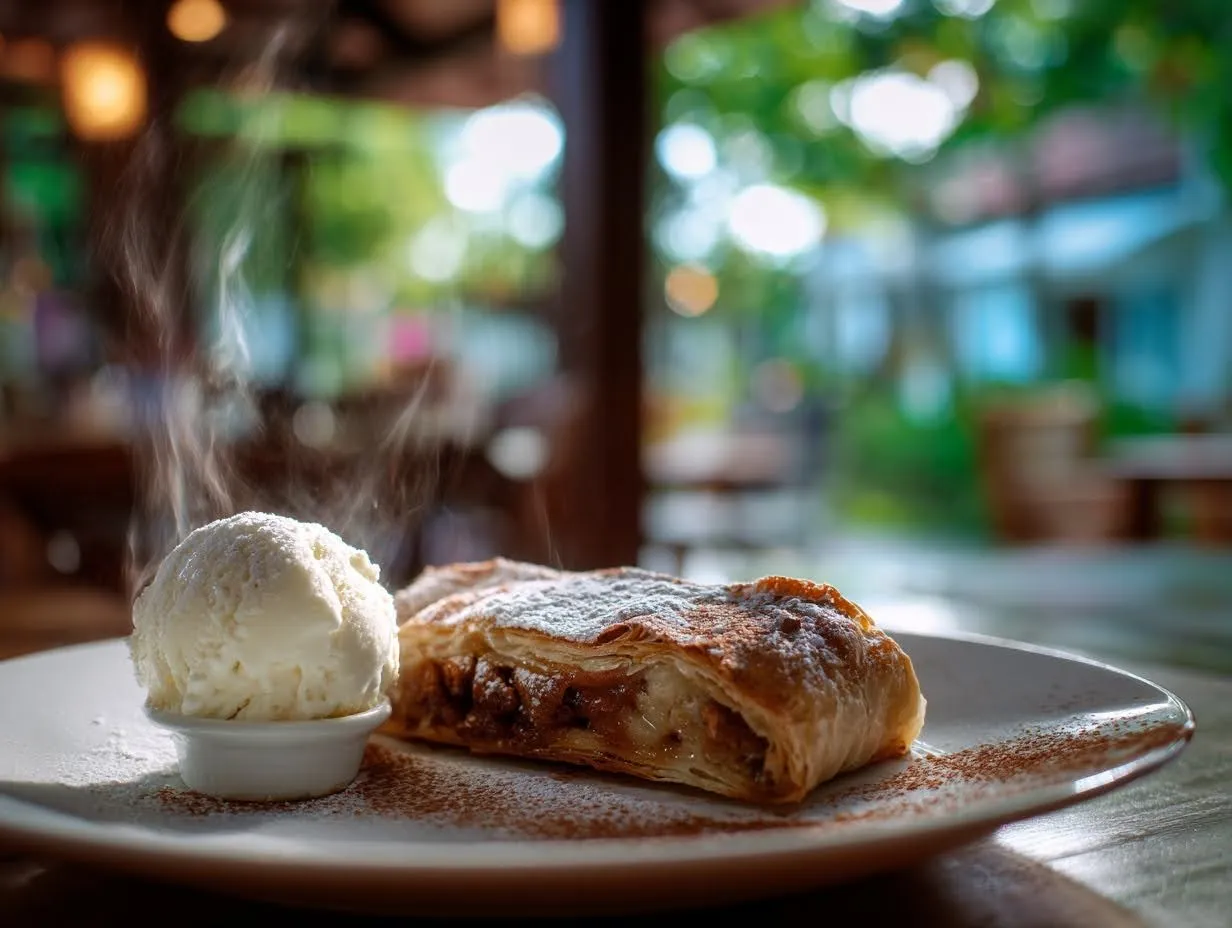
🅿️ You’re enjoying life in Bali 🌴—surfing in Canggu, sipping coconuts in Ubud—but suddenly your taste buds crave something hearty, savory, and comforting. You start dreaming of bold sausages, warm pretzels, and creamy potato dishes. But where can you find authentic German cuisine without flying 10,000 km to Berlin? 😩
🅰️ Searching for authentic German food in Bali can be frustrating 😤. Many “Western” restaurants offer fusion menus or watered-down versions of classic dishes. The bratwurst is too sweet, the schnitzel tastes frozen, and the beer is… not Bavarian. You just want the real taste of Germany—crispy, rich, and full of tradition 🍺🥨.
🆂 ✨ Good news! This blog explores what makes traditional German cuisine so special—and where you can enjoy it right here in Bali. Whether you’re craving a Bavarian feast or a cozy plate of goulash, we’ll guide you to the most authentic German restaurants and dishes on the island. ✨
🆃 💬 “I hadn’t had real sauerkraut since I left Europe,” says Max, a German expat in Seminyak. “But this place reminded me of my grandma’s cooking in Hamburg—down to the mustard!” 🇩🇪🍽️
🅴 🥨 From crispy schnitzel to buttery spätzle, you’ll discover iconic dishes, regional flavors, and even beer hall atmospheres—all waiting in unexpected corners of Bali. These aren’t tourist traps, but local favorites loved by expats and foodies alike. 🍖
🅰️ So grab a fork (and maybe a stein 🍻), and let’s explore the best German food in Bali—you might be surprised how close “home” really tastes 🌴.
Table of Contents
- What Makes German Cuisine So Unique? ✨
- Top 5 Traditional German Dishes You Must Try 🍖🥨
- Where to Eat Authentic German Cuisine in Bali 🍽️
- What Makes a German Restaurant Truly Authentic? 👨🍳🍺
- Real Story “How I Found the Best German Food in Bali” 🧑🍳
- Best German Restaurants in Bali by Area (Canggu, Ubud, Seminyak) 📍
- How Much Does German Food in Bali Usually Cost? 💸
- Can You Find Vegan or Halal Options at German Restaurants in Bali? 🌱🕌
- FAQs About Enjoying German Cuisine in Bali ❓
What Makes German Cuisine So Unique? ✨
German cuisine is all about comfort, flavor, and hearty satisfaction. Whether you’re eating in Berlin or Bali, the first thing you’ll notice is the rich use of ingredients like potatoes, cabbage, sausages, and meats. 🥔🥬🍖 Germany’s food tradition is deeply rooted in history—every region has its own specialties, from Bavarian Weißwurst to Berlin’s Currywurst.
Unlike some lighter Asian cuisines, German food is meant to fill you up and keep you warm. It’s perfect for those craving a “home-cooked” feel. It’s also known for balance—meaty mains paired with sour pickles, strong mustard, or creamy sauces. And don’t forget the bread! Germany has over 300 types 🍞. All this makes German cuisine not just tasty, but also full of character and variety.
Top 5 Traditional German Dishes You Must Try 🍖🥨
If you’re new to German cuisine, here are five dishes you shouldn’t miss:
- Schnitzel – Breaded and fried meat cutlet, usually pork or chicken. Crispy outside, juicy inside 🍗
- Bratwurst – Grilled sausage, often served with mustard and sauerkraut 🌭
- Spätzle – German-style egg noodles, often topped with cheese (like German mac & cheese) 🧀
- Sauerkraut – Fermented cabbage, a tangy side dish that goes with almost everything 🥬
- Apfelstrudel – Warm apple pastry dessert with cinnamon and raisins 🍎
Each of these brings out a different flavor of Germany, and together they show just how rich and comforting traditional German dishes can be.
Where to Eat Authentic German Cuisine in Bali 🍽️
Looking for authentic German cuisine in Bali? You’re in luck! Bali has a surprising number of restaurants that serve genuine German flavors. These places are often run by German expats or chefs trained in Europe 🇩🇪👨🍳.
You’ll find schnitzels the size of your face, sausages sizzling fresh from the grill, and even imported German beers 🍺. The key is to look for places with real ingredients—not “German-style” menus that are actually fusion or generic European. Search for restaurants that highlight traditional recipes and offer homemade sauces, imported mustard, and fresh bread baked in-house.
What Makes a German Restaurant Truly Authentic? 👨🍳🍺
Not every place claiming to serve “German food” really hits the mark. So how can you tell what’s authentic?
Start with the menu. A real German restaurant will offer dishes like Schweinshaxe (pork knuckle), Rinderroulade (beef rolls), and freshly made Spätzle. Next, check the ingredients—authentic places often use imported sausages, German pickles, and original mustard. 🍖🥒
Also, look at the ambience. Many authentic spots will have wooden tables, beer steins, or Bavarian flags hanging around. If the staff or owner is German or has trained in Germany, that’s a big plus. A genuine restaurant offers not just food, but a full experience.
Real Story “How I Found the Best German Food in Bali” 🧑🍳
“I’m from Stuttgart, Germany,” says Felix, a 36-year-old expat living in Bali. “After a year of eating nasi goreng and sambal every day, I started missing home. I wanted real German food in Bali, something warm, salty, and traditional.”
He tried a few tourist spots, but they felt fake. Then he found Warung Schnitzel in Ubud. “The owner, Peter, is German, and he bakes the bread himself. The schnitzel was crispy, the sauerkraut was perfectly sour, and the Spätzle brought back childhood memories,” Felix smiles.
Now, every month, he meets with other German expats there. “It’s more than food,” he says. “It’s a piece of home.”
Best German Restaurants in Bali by Area (Canggu, Ubud, Seminyak) 📍
Here are some of the best German restaurants in Bali, sorted by area:
🌊 Canggu – Biergarten Canggu offers a laid-back vibe with grilled sausages, cold beer, and live sports.
🌿 Ubud – Warung Schnitzel serves hearty traditional German dishes and homemade bread in a cozy, green setting.
☀️ Seminyak – Mama’s German Restaurant is one of the oldest and most famous. Think pork knuckle, draft beer, and Bavarian classics.
These spots are loved by locals and expats alike for their quality, portion size, and authenticity. Perfect for when you’re craving something beyond Balinese flavors.
How Much Does German Food in Bali Usually Cost? 💸
Wondering if German food in Bali fits your budget? Here’s what to expect:
- Main dishes like schnitzel or bratwurst: IDR 80k–150k
- Sides like sauerkraut or spätzle: IDR 30k–50k
- Imported German beer: IDR 60k–120k per bottle/pint
- Full meal with drink: around IDR 150k–250k per person
That’s roughly $10–$16 USD—cheaper than in Europe, but a bit pricier than local warungs. Still, it’s worth it for the taste of home 🏡.
Can You Find Vegan or Halal Options at German Restaurants in Bali? 🌱🕌
Yes, some German restaurants in Bali are adapting to modern dietary needs. 🌱
For vegans, you can often find plant-based schnitzels made with tofu or soy, veggie sausages, and salads. Warung Schnitzel in Ubud, for example, has vegan-friendly versions on request.
For halal eaters, it’s a bit more tricky, as pork is common in German cuisine. But many places offer chicken schnitzel or beef-based dishes instead 🐓🐄. Always ask the staff if the meat is halal-certified, especially in larger restaurants.
FAQs About Enjoying German Cuisine in Bali ❓
-
Are German restaurants in Bali kid-friendly?
Most are! Many offer kid portions and casual seating.
-
Can I find real German beer in Bali?
Yes! Places like Mama’s and Biergarten import beers like Erdinger and Paulaner. 🍺
-
Do I need to book in advance?
Not always, but it’s a good idea for dinner—especially on weekends.
-
Are there gluten-free options?
Some restaurants offer gluten-free sausages and bread—just ask!
-
Is tipping expected?
Not required, but appreciated (5–10% is nice if service was great).









